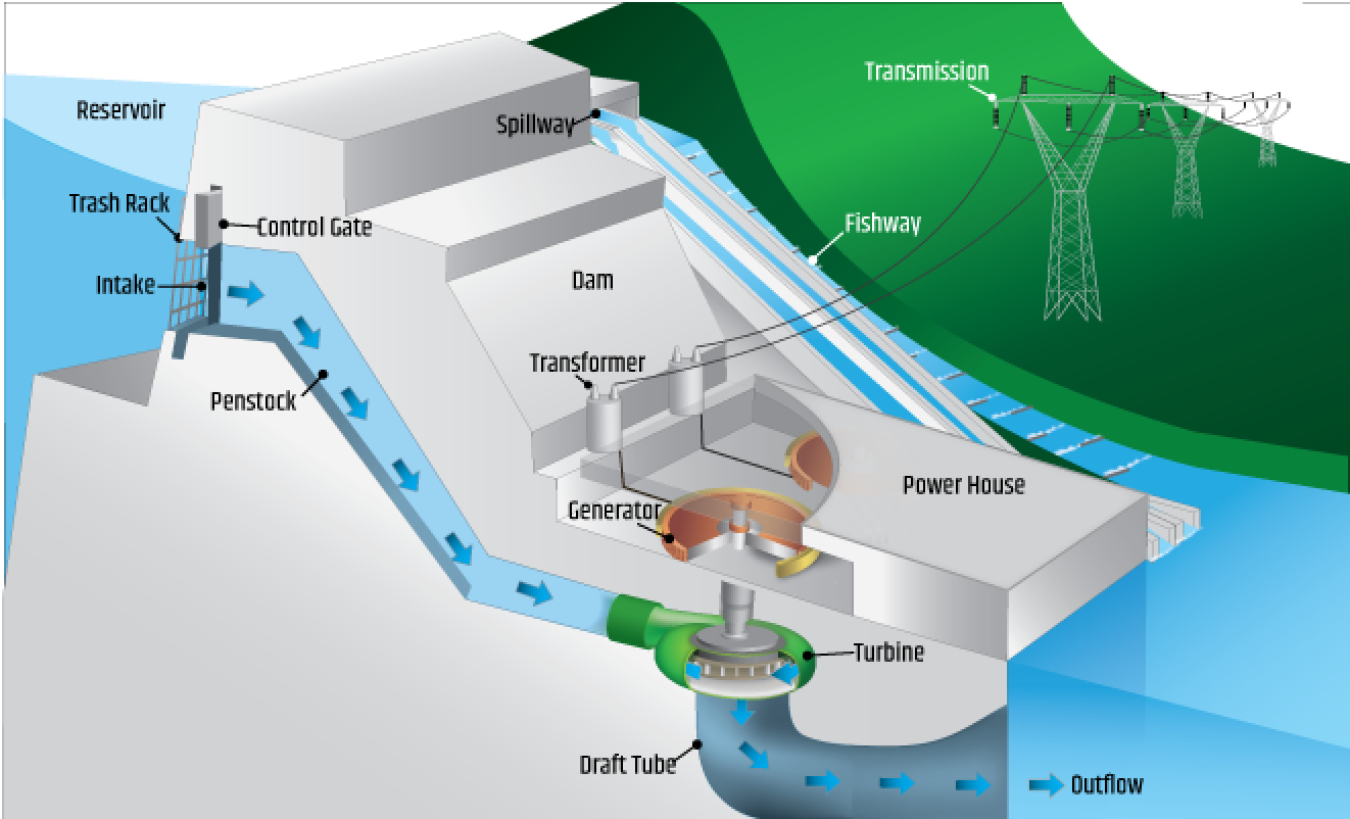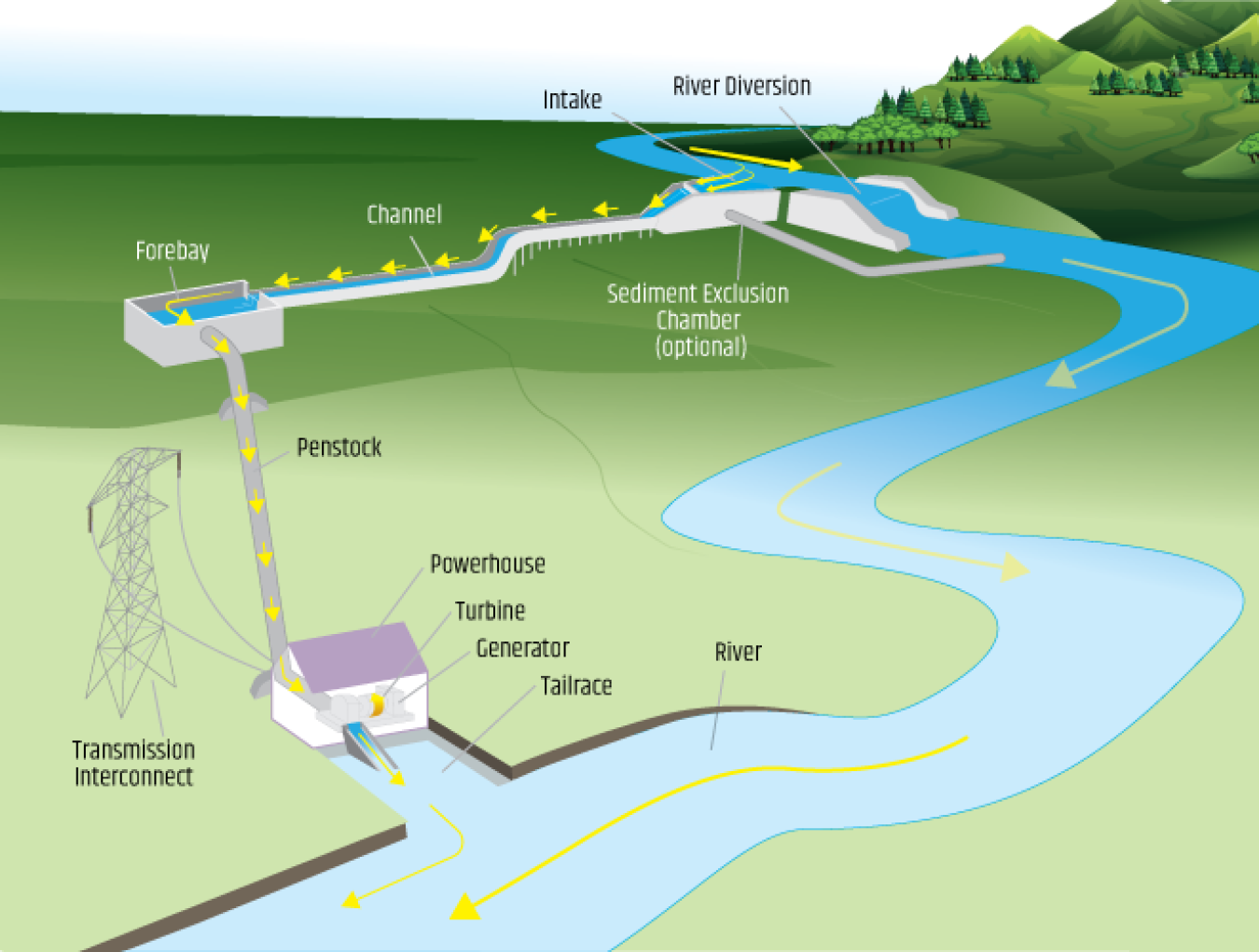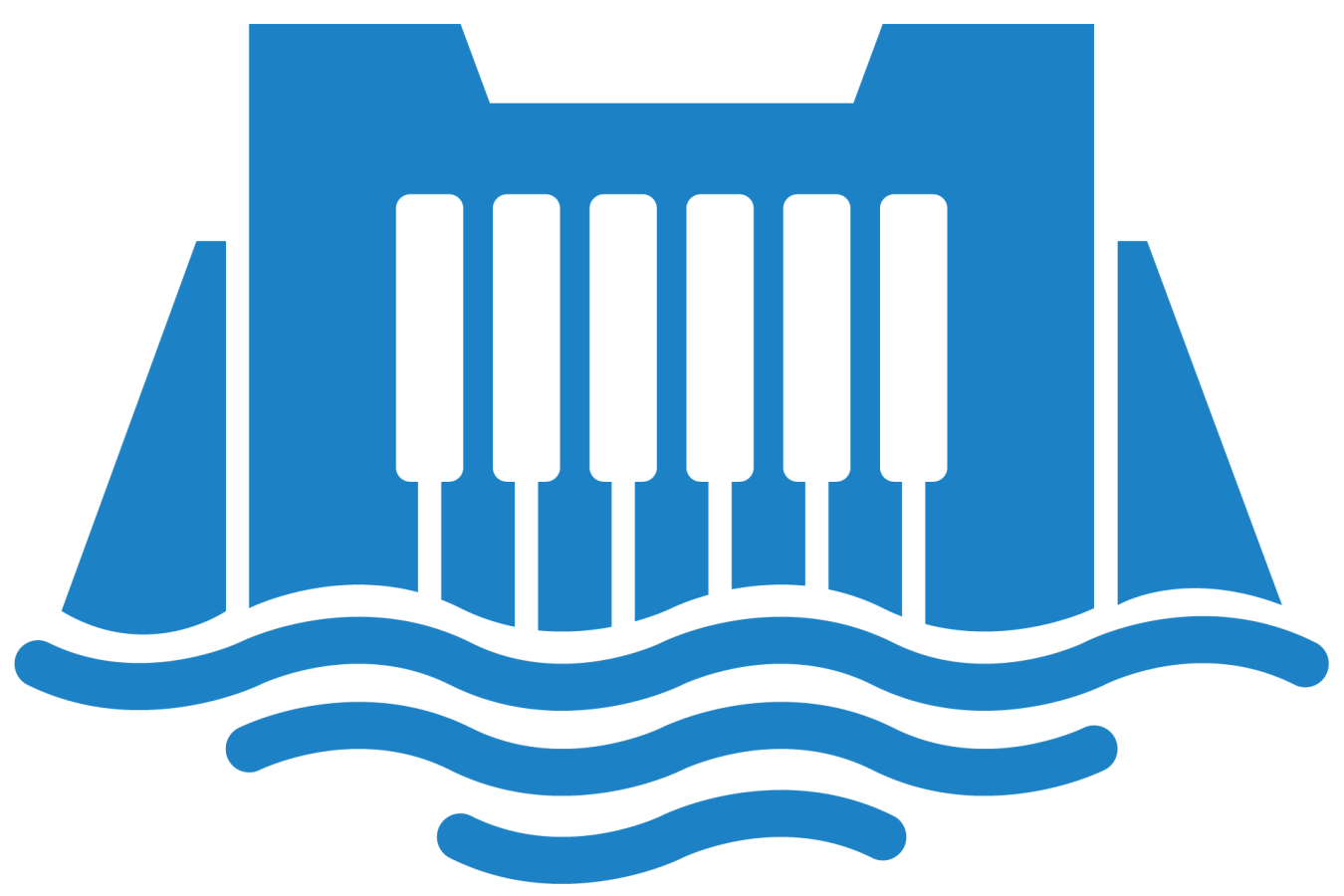Overview
There are three types of hydropower facilities: impoundment, diversion, and pumped storage. Some hydropower plants use dams and some do not.
Although not all dams were built for hydropower, they have proven useful for pumping tons of renewable energy to the grid. Of the more than 90,000 dams in the United States, less than 3% produce power. The other dams are used for recreation, stock/farm ponds, flood control, water supply, and irrigation.
Hydropower plants range in size from small systems suitable for a single home or village to large projects producing electricity for utilities. Learn more about the sizes of hydropower plants.
Impoundment
The most common type of hydroelectric power plant is an impoundment facility. An impoundment facility, typically a large hydropower system, uses a dam to store river water in a reservoir. Water released from the reservoir flows through a turbine, spinning it, which in turn activates a generator to produce electricity. The water may be released to meet changing electricity needs or other needs, such as flood control, recreation, fish passage, and other environmental and water quality needs.

Diversion
A diversion, sometimes called a “run-of-river” facility, channels a portion of a river through a canal and/or a penstock to utilize the natural decline of the river bed elevation to produce energy. A penstock is a closed conduit that channels the flow of water to turbines with water flow regulated by gates, valves, and turbines. A diversion may not require the use of a dam.

Pumped Storage
Another type of hydropower, called pumped storage hydropower, or PSH, works like a giant battery. A PSH facility is able to store the electricity generated by other power sources, like solar, wind, and nuclear, for later use. These facilities store energy by pumping water from a reservoir at a lower elevation to a reservoir at a higher elevation.
When the demand for electricity is low, a PSH facility stores energy by pumping water from the lower reservoir to an upper reservoir. During periods of high electrical demand, the water is released back to the lower reservoir and turns a turbine, generating electricity.
Sizes Of Hydroelectric Power Plants
Hydropower facilities range in size from large power plants, which supply many consumers with electricity, to small and even ‘micro’ plants, which are operated by individuals for their own energy needs or to sell power to utilities.
Large Hydropower
Although definitions vary, DOE defines large hydropower plants as facilities that have a capacity of more than 30 megawatts (MW).
Small Hydropower
Although definitions vary, DOE defines small hydropower plants as projects that generate between 100 kilowatts and 10 MW.
Micro Hydropower
A micro hydropower plant has a capacity of up to 100 kilowatts. A small or micro hydroelectric power system can produce enough electricity for a single home, farm, ranch, or village.
Hydropower News
-
- Hydropower
January 16, 2025 -
- Hydropower
January 16, 2025 -
- Hydropower
- Marine Energy
January 8, 2025 -
- Hydropower
December 12, 2024 -
- Hydropower
- Clean Energy
- Ripple Effect
December 10, 2024 -
- Hydropower
- Marine Energy
November 15, 2024
WPTO's Hydropower e-newsletter features news on R&D and applied science to advance sustainable hydropower and pumped-storage technologies.
WPTO brings funding opportunities, events, publications, & activities related to hydropower and marine energy directly to your inbox.


